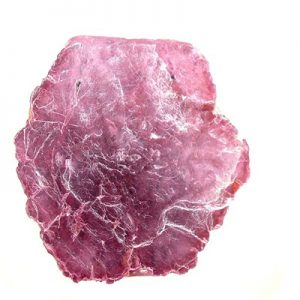Lepidolite
Lepidolite ended up being as soon as considered to be a mineral that is distinct but has been redefined by the IMA as a band of minerals and included in the Polylithionite-Trilithionite Series. The name Lepidolite can be used loosely as a term for any light lithium-bearing that is colored that has not been adequately analyzed for types determination (ie., some “Lepidolite” may really be Muscovite or Phlogopite). Lepidolite is really a known member of the Mica Group of minerals that also incorporates Celadonite, Muscovite, Phlogopite and Polylithionite.
Lepidolite can be an mica that is uncommon is an ore of lithium that forms in huge public that can include substantial amounts of lithium. Its typical pink to violet colors are one regarding the industry that is to determine Lepidolite from other micas although pink Muscovite or very pale Lepidolite may complicate identification.
Lepidolite is available from Rozná, near Bystrice, Czech Republic; from Alabashka, Ural Mountains, Russia. In the Varuträsk pegmatite, 15 km northwest of Skellefteå, Västerbotten, Sweden. In the united states, at Mt. Mica, near Paris, Oxford County, and Auburn, Androscoggin County, Maine; in the Mesa Grande and Pala districts, San Diego County, Ca; through the Brown Derby pegmatite, Gunnison County, Colorado; within the Ingersoll mine, near Keystone, Pennington County, South Dakota. From the Tanco mine, Bernic Lake, Manitoba, Canada. At Maharitra, Mt. Bity, Madagascar. From Bikita, Zimbabwe. In India, at Hazaribagh, Bihar. From the Virgem da Lapa pegmatite, Minas Gerais, Brazil.
| Category | Phyllosilicate |
| Chemical Formula: | K(Li,Al)3(Si,Al)4O10(F,OH)2 |
| Potassium Lithium Aluminum Silicate Hydroxide Fluoride | |
| Molecular Weight: | 388.30 gm |
| Composition: | Potassium | 10.07 % | K | 12.13 % | K2O |
| Lithium | 3.58 % | Li | 7.70 % | Li2O | |
| Aluminum | 6.95 % | Al | 13.13 % | Al2O3 | |
| Silicon | 28.93 % | Si | 61.89 % | SiO2 | |
| Hydrogen | 0.26 % | H | 2.32 % | H2O | |
| Oxygen | 45.32 % | O | |||
| Fluorine | 4.89 % | F | 4.89 % | F | |
| — % | F | —2.06 % | —O=F2 | ||
| 100.00 % | 100.00 % | = TOTAL OXIDE |
| Crystallography: | Monoclinic |
| Crystal Habit: | Tabular to prismatic pseudohexagonal crystals, commonly with rounded terminal faces, to 20 cm. In coarse to fine scaly aggregates and massive. |
| Twinning: | Rare, composition plane {001}, twin axis [310] |
| Cleavage: | Perfect {001} |
| Fracture: | Uneven |
| Tenacity: | Flexible, elastic |
| Moh’s Hardness: | 2.5 – 4.0 |
| Density: | 2.80 – 2.90 (g/cm3) |
| Luminescence: | May fluoresce medium intensity of creamy white to pale yellow; sometimes yellow |
| Radioactivity: | Barely Detectable; GRapi = 143.68 (Gamma Ray American Petroleum Institute Units) |
| Color: | Pink, purple, rose-red, violet-gray, blue, yellowish, white, colorless; colorless to pale pink in thin section |
| Transparency: | Translucent |
| Luster: | Vitreous, Pearly |
| Refractive Index: | 1.525 – 1.587 Biaxial ( – ) |
| Birefringence: | 0.0290 – 0.0380 |
| Dispersion: | Weak; r > v |
| Pleochroism: | X = almost colorless; Y = Z = pink, pale violet |


